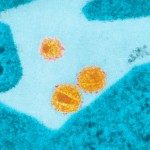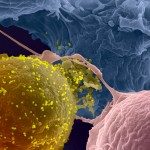Link to Pubmed [PMID] – 29932942
J. Mol. Biol. 2018 Aug;430(17):2557-2589
The chemokine receptor CCR5 has been the focus of intensive studies since its role as a coreceptor for HIV entry was discovered in 1996. These studies lead to the development of small molecular drugs targeting CCR5, with maraviroc becoming in 2007 the first clinically approved chemokine receptor inhibitor. More recently, the apparent HIV cure in a patient transplanted with hematopoietic stem cells devoid of functional CCR5 rekindled the interest for inactivating CCR5 through gene therapy and pharmacological approaches. Fundamental research on CCR5 has also been boosted by key advances in the field of G-protein coupled receptor research, with the realization that CCR5 adopts a variety of conformations, and that only a subset of these conformations may be targeted by chemokine ligands. In addition, recent genetic and pathogenesis studies have emphasized the central role of CCR5 expression levels in determining the risk of HIV and SIV acquisition and disease progression. In this article, we propose to review the key properties of CCR5 that account for its central role in HIV pathogenesis, with a focus on mechanisms that regulate CCR5 expression, conformation, and interaction with HIV envelope glycoproteins.



